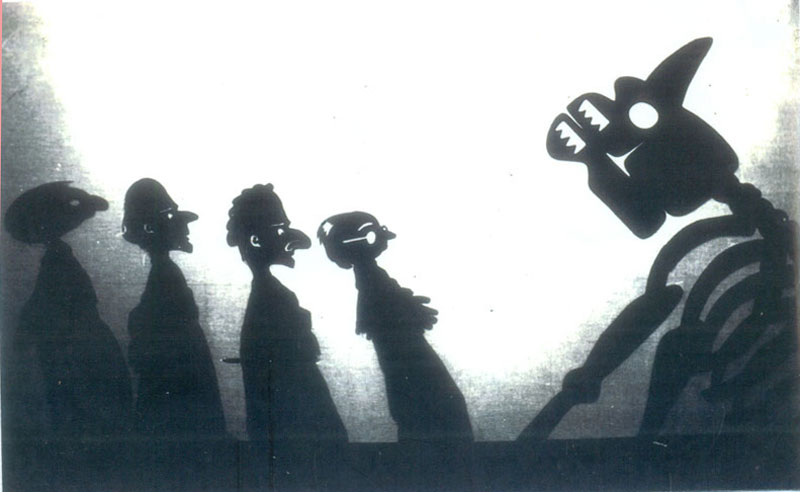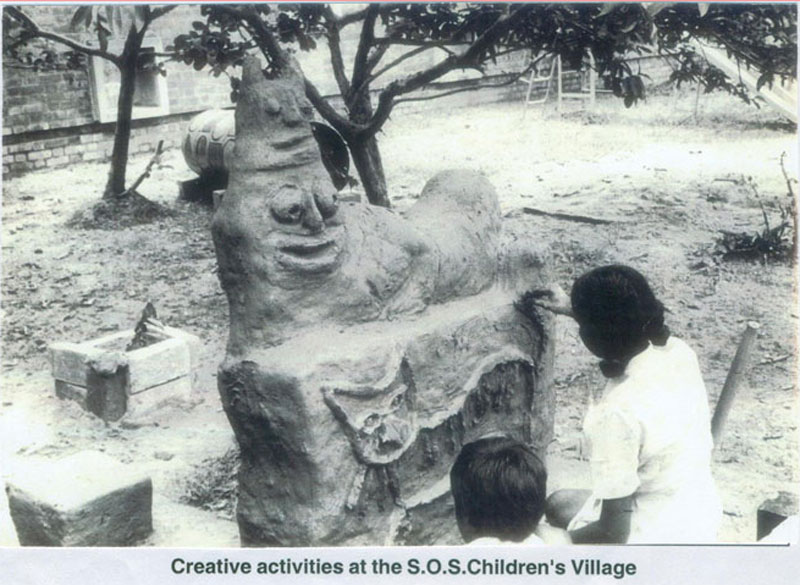Sukalyani Paul



Grant Period: Over one year and six months
This project emerges out of the dissatisfaction with the communicational strategies in traditional puppetry. Puppeteer Swapna Sen remarks, “Over the years, despite my exposure, I was experiencing a dearth of forward or vertical motion in ideas and implementation. It made me search for newer ideas and forms and new challenges. When I met sculptor Alok Som, I was convinced that there was a way ahead in a new direction in attempting to cast puppetry into a contemporary mould while keeping intact its ethnic and historical identity. In a contemporary set-up, this art form could appeal to the minds of children who are otherwise impervious to contemporary, written narratives.”
The three collaborators – Alok Som, Swapna Sen and Sukalyani Paul — come from different workspaces and have diverse experiences in working with children. Alok Som, has worked with children for 22 years, and feels that ‘the language of pictures and forms’ appeals to children who have little or no formal education. He has experimented with the character-specific illustration of stories, and was able to elicit a response that he thinks would have been impossible to achieve through language. The experience of attending Peter Schumann’s puppetry workshop at the Ninasam Theatre Institute in Heggodu, Karnataka, in February 2002, opened his eyes to another method of communication, that of adding movement to his otherwise static sculptures.
Swapna Sen’s experience with puppets and the arts has been varied. She imbibed the art of puppetry under the renowned puppeteer Raghunath Goswami, through her association with The Puppets since I971. After Mr Goswami’s death in I995, she carried on her experimentation with different forms of puppets and their presentation, including new lighting and sound techniques. A Fulbright Fellow, she has toured and performed widely. However, despite her exposure and experience, she had been frequently feeling a dearth of new ideas and techniques that would allow her to evolve her skills in puppetry further.
Sukalyani Paul, who is a shoe last designer and woodworker, has been teaching children from the red-light area in Kalighat for the past two years, and believes that only direct communication works with them. Despite a modern, urban upbringing and an English education, Ms Paul’s need to find a ‘right balance in life’ and connect with people made her active in mass theatre and street performances with a group like Alaya. Her l7 years of professional expertise in shoe last design and woodwork has also made her alive to the possibilities that exist in the shape, form, grain and texture of wood. Her interaction with Alok Som and Swapna Sen made her realise the potential of her expertise in developing novel puppet structures and architecture.
This preparatory grant will enable the three artists to experiment with style and technique and arrive at contemporary scripts and presentation methods. The idea is to find a balance between traditional puppetry and a contemporary audience, and develop a variety of scripts and puppets that address different audiences. The three artists believe that their work with marginalised groups of children will allow them to creatively explore more direct methods of communication. The six-month preparatory phase will enable the three artists to interact with each other and also with traditional puppeteers and toy-makers in rural Bengal. The collaborators will travel to the toy-makers’ villages and engage themselves in six interactive sessions and group discussions. They will also conduct script development workshops with resource people in Kolkata to arrive at new scripts. They feel that puppets should be made with found objects and low-cost material in order to make the art more accessible. They hope to utilise the quasi-narrative nature of puppetry, low-end technology and simple animation techniques to reach out to audiences more easily. The artists will test their experiments with scripts, sound and puppets by presenting them to the children of Kalighat.
Unless the trio is able to connect to the immediate lived reality of these children, involve them more integrally in their project, and use their inputs creatively to give puppets a fresh lease of life, the project will not realise its full potential.
